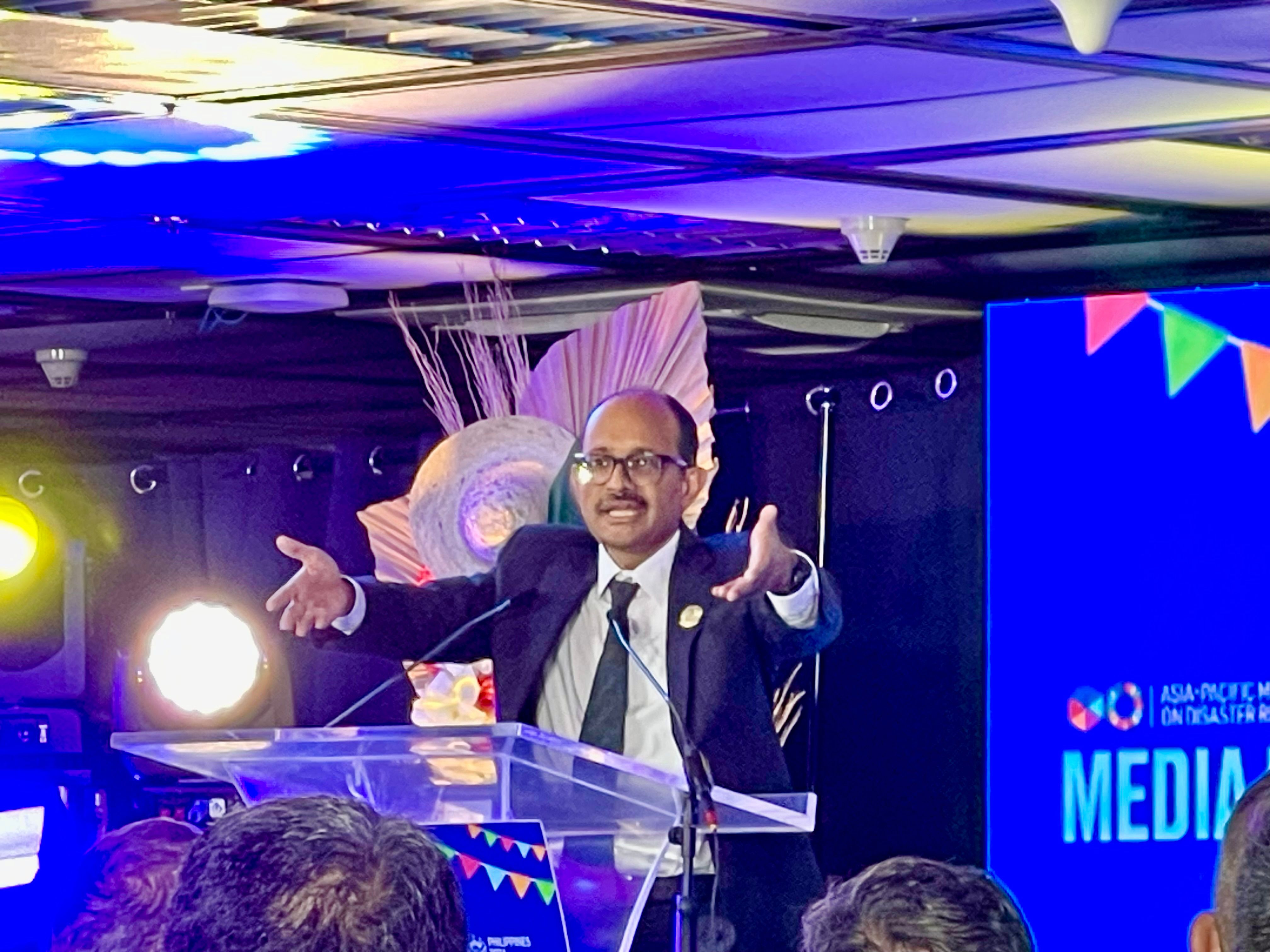PH a 'lighthouse' to the world due to its effective disaster risk reduction—UN official
By Jel Santos

The Philippines is a “lighthouse” to the world for its effective disaster risk reduction, an official of the United Nations Office for the Disaster Risk Reduction (UNDRR) said during the start of the 2024 Asia-Pacific Ministerial Conference for Disaster Risk Reduction (APMCDRR) in Pasay City on Monday, Oct. 14.
“If I were to describe that in one word—lighthouse. I think the work that has been done in the Philippines can be a lighthouse to the rest of the region and in the world,” Kamal Kishore, the special representative of the UN Secretary-General for Disaster Risk Reduction, and head of UNDRR, said in a panel discussion.
“In my early remarks today, I tried to capture three key features of effective disaster risk reduction in the Philippines, that, at the higher level can be considered a good practice and that is something that can be emulated elsewhere,” he went on.
The most important thing done by the Philippines, according to Kishore, is its people-centered approach which ensures that all policies, programs, and projects “come together at the local level.”
The UN official took note of the country’s practice of “walking across sectors.”
“The second thing is walking across sectors. Just here, we have two secretaries (DENR Secretary Loyzaga and DND Secretary Gilbert Teodoro) and we have interaction and partnerships with many more in the preparation of just this conference, so I think the whole-of-government approach and the civil society along,” he said.
“These things cannot be taken for granted in all parts of the world, but Philippines exemplifies that through practice. So we don’t just talk about how vulnerable Philippines is, but also how ahead of the curb Philippines is in management of those risks,” he added.
Meanwhile, Department of Environment and Natural Resources (DENR) Secretary Maria Antonia “Toni” Yulo-Loyzaga stated that Kishore recognized the Philippines’ collaboration across different sectors, prompting him to remark that the country is ahead in disaster risk reduction initiatives.
“[It] has not been easy with other countries. It hasn’t been easy for us as well so medyo trinabaho iyan [we worked on that] over time to bring in academia, to bring in civil society, to bring in the private sector and local governments themselves kasi iba-iba rin ang (they have different) capacity at the local level,” she said in an ambush interview.
Loyzaga added: “The key seems to be how you institutionalize this disaster risk reduction agenda, and how that can be based in the state colleges and universities that are localized in their focus, and of course, private education institution also so that when political administration change the knowledge continues to develop and is somewhere in the local government.”
4,000 participants
The DENR chief said over 4,000 participants, from 70 countries, took part in the 2024 APMCDRR at Philippine International Convention Center (PICC).
This year's APMCDRR centers on the theme "Surge to 2030: Amplifying Ambition in the Asia-Pacific to Fast-Track Disaster Risk Reduction."
The 2024 APMCDRR will be structured around the pillars of disaster risk reduction funding, gender-sensitive and inclusive disaster risk governance, localization, and urban and rural resilience.
Per Loyzaga, the 2024 APMCDRR provides “the chance to come together, share what we have learned, and strengthen the partnerships necessary to move forward.”
The Philippines’ hosting of the APMCDRR, she said, will increase access to disaster risk financing.
The country is also expected to forge partnerships and strategic collaborations for capacity development, and country-to-country exchange in disaster risk reduction science, engineering, technology, and innovations.
The APMCDRR, a biennial conference convened by the UNDRR, is a primary regional platform that brings together global leaders to monitor, review, and strengthen cooperation for the regional implementation of the Sendai Framework for Disaster Risk Reduction 2015-2030.